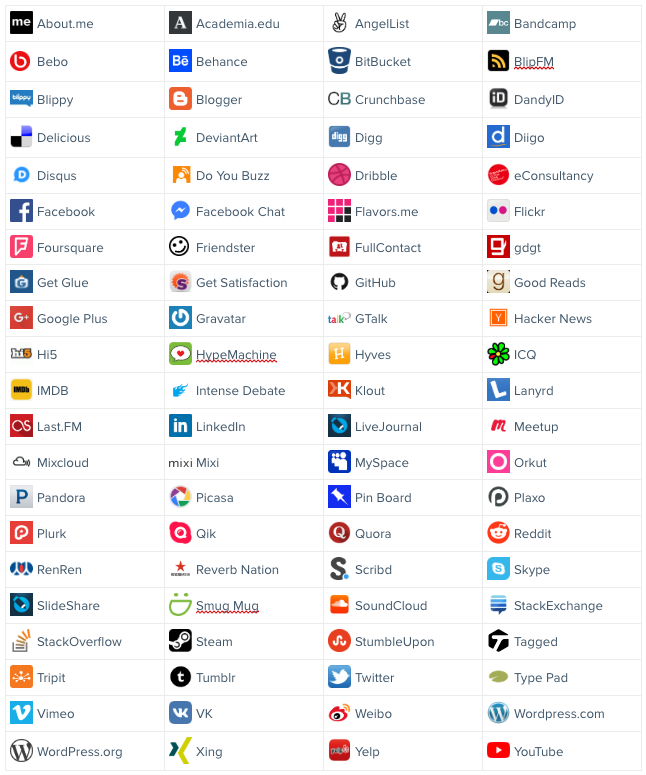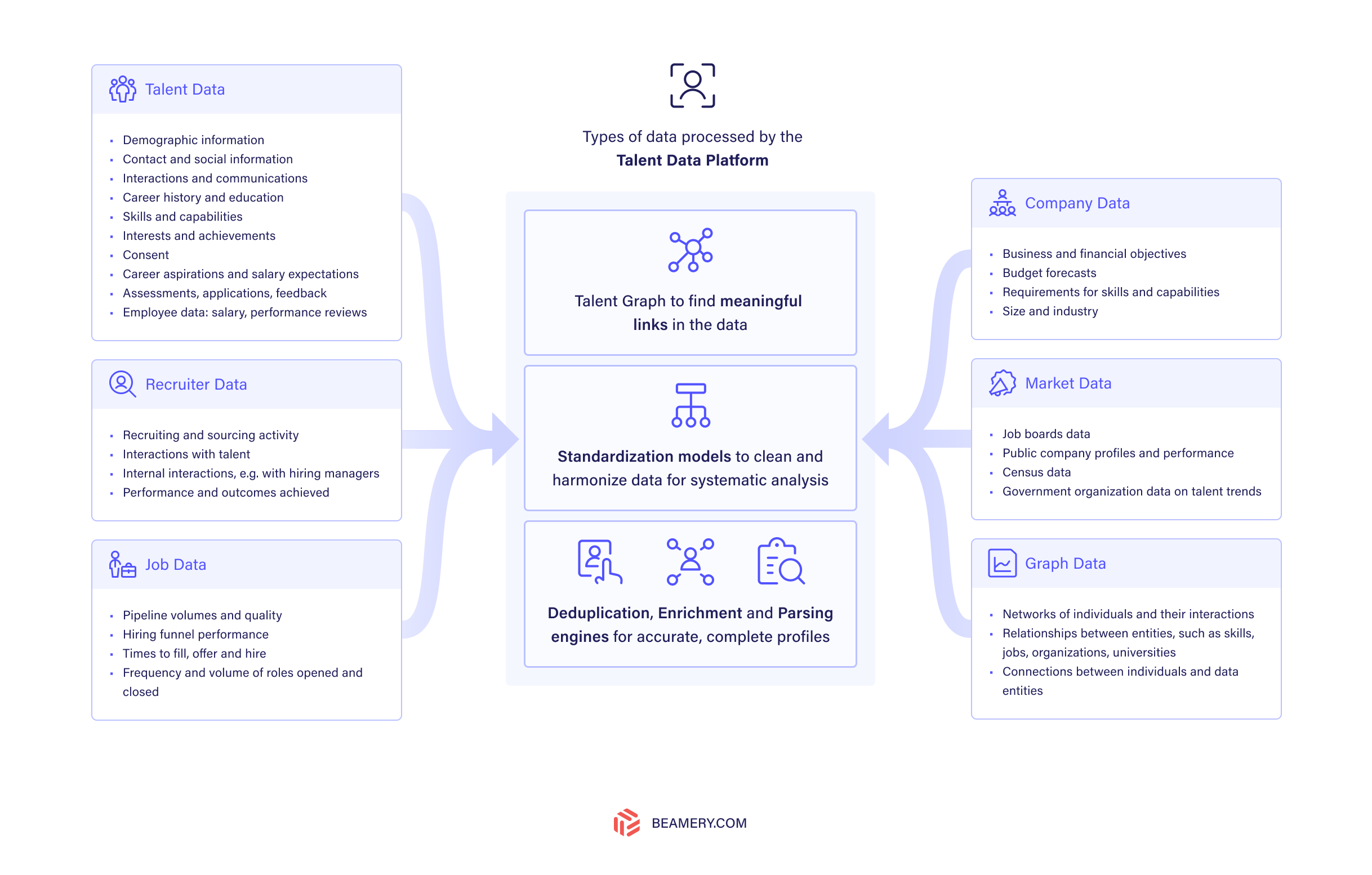The Power of Talent Data Platforms in Recruiting
The recruiting tech stack is not playing catch-up to the rest of the business anymore.
For the last decade or so, talent teams had to make do with badly cobbled-together solutions to run their operations, while their colleagues in marketing, sales, or finance had access to granular reporting, sensitive forecasts, and increasingly powerful workflows powered by smart automation and artificial intelligence technologies. But talent data platforms are changing that.
How is talent acquisition technology changing?
Recruiting technology has already been going through a few changes in the past decades. It has moved from being centered around job applications, to incorporating CRMs and enabling proactive sourcing, to prioritizing engagement and experience with recruitment marketing functionalities. Those were substantial shifts, but the momentum is not stopping there.

Business leaders have recognized that the top internal issue facing their business is the attraction and retention of top talent. Following the massive loss of jobs of the Covid-19 crisis, the talent market will only get harder to navigate. The pressure placed on talent acquisition teams is pushing them to grow radically. It’s not enough to become marginally more efficient—they have to find ways to deliver outcomes that were not possible before.
Talent teams now want technology that will not only help recruiters execute on their workflows, but also suggest workflows that they didn’t think of themselves. They want to leverage every available candidate data source. They are looking for personalization based on extremely different data points, like the last time someone was promoted, or the likelihood that they will move to another city based on their family situation.

They want talent tools that continuously test for patterns and insights without the manual oversight of humans. They want forecasting capabilities that take into account forward-looking data points such as projected market growth, internal financial plans, or product roadmaps, and not just historical performance.
This might sound like a wishlist, but it’s only a few examples of what powerful technology platforms can already do, provided they have access to the right data.
Why recruiting is headed towards talent data platforms
“The latest research shows that the average large company now has 11 core systems of record, 22 learning tools and platforms, and more than 15 different technologies in recruiting. This doesn’t include all the various payroll providers, wellbeing tools, benefits providers, and other systems we need to manage our workforce. And new tools to manage contingent workers and teams are everywhere.” - Josh Bersin, The Year Ahead: Reinventing Work, Reinventing HR, Reinventing Ourselves
All businesses agree that data can be a decisive competitive advantage, but between collecting data in one form or another, and using it to its full potential, there is a large gap that not enough organizations have bridged. We tend to talk about data as this amorphous blob floating around between our various tools, but that’s not how data lives in our organizations.
In reality, it’s stored either in tabular form or as a database of documents in disparate clumps across our different talent tools. In the case of talent organizations, it’s a list of resumes here, an activity log there, with two or three common data points to link all these different entries, such as a candidate ID or an email address. But this structure will allow talent teams to reach only a fraction of the potential gains that their candidate data can deliver.
First, even when your different talent tools have powerful integrations, all of their data doesn’t actually exist in one big table, where everything is uniform, and fits the same fields, without losing any of the meaning associated with each data point when they were originally collected. You need a system, a structure, whose main job is to be a place for all that unstructured data to live, so that you can perform tasks such as cleaning it, deduplicating it, making it uniform but still usable by multiple talent tools, and without significant loss of meaning.
Second, and this is probably the most important part for talent leaders, you can only really learn from data if it is unified, cleaned, and properly maintained.
We hear more and more about how artificial intelligence will impact hiring decisions, how talent automation and AI are already here, and how AI can transform recruiting. What vendors do not talk about nearly enough is that the best AI technology in the world is only as good as the data you feed it.
Machine learning algorithms, especially, can only be truly successful if they can use large amounts of clean, uniform, up-to-date data to “learn”, so to speak. Otherwise, they will simply spit out hilariously useless recommendations. But when done right, they can make new outcomes possible for the talent team—which is exactly what is needed today. We’ve written more about the subject here.
A Talent Data Platform is not just about integrations
Modern talent teams need to connect different sources of information: Sourcing, attraction and employer brand, candidate experience, role matching, chatbots, events, and ATSs all in one place. But building a set of perfect integrations that allows a bilateral flow of every piece of information between every two tools is unrealistic. What is more likely to happen is that different vendors will offer different integrations, and candidate data will be lost between tools, maybe because it’s not in the right format, or not updated in real time, or only travels in one direction and not the other.
Integrations are great, but it’s important to keep in mind the difference between having an integrated tool stack, and having a talent data platform in place. The first is table stakes for talent teams. Some integrations are significantly better than others, but they remain gateways between existing talent tools. A talent data platform can be thought of as a separate structure that receives and serves up data to these different tools, no matter how structured or unstructured it is, and without losing any of its relational meaning.
A definition of talent data platforms
Data platforms exist in other areas of the business already. A data platform is defined as “an integrated technology solution that allows data located in databases to be governed, accessed, and delivered to users, data applications, or other technologies for strategic business purposes.”
Similarly, a Talent Data Platform is the foundational technology of the modern talent acquisition tool stack, and acts as the single source of truth for talent-related information. Done right, it becomes the central database that unifies information across solutions, and surfaces meaningful, reliable data to every other talent tool.

Candidate data can be extremely valuable to companies who use it well, and talent leaders know it. The main challenge that they are still facing is getting their talent stack to a point where all of the candidate data they collect can actually be used to its full potential.
It’s not an easy thing to accomplish, as this kind of digital transformation needs support from the wider business, but it has been done before—customer data platforms, for example, are not a novelty anymore, and there is a lot to be learned from them. In the meantime, talent leaders have to keep deepening their understanding of talent data platforms, and set up their teams to quickly adapt to a data-driven recruiting world.